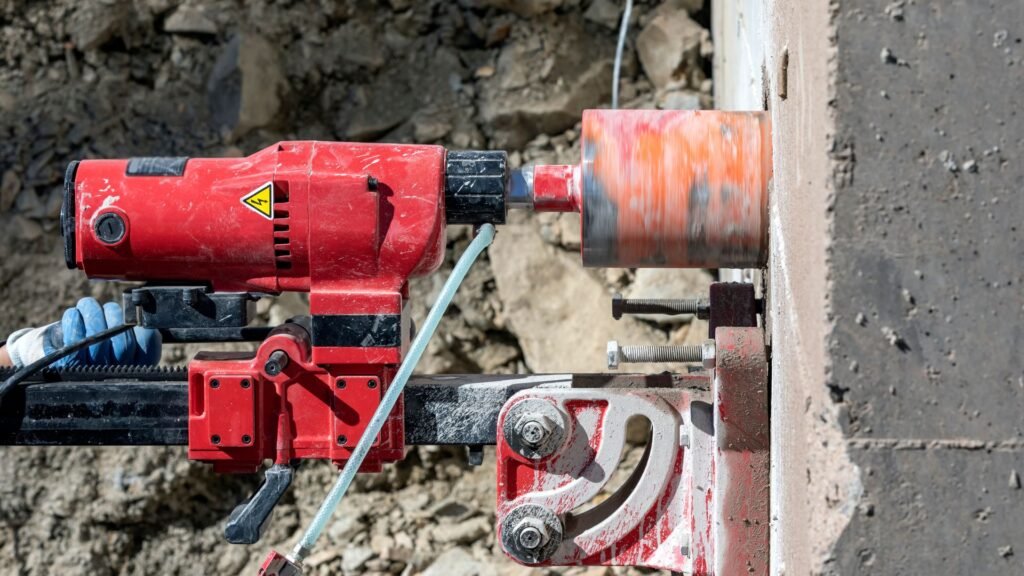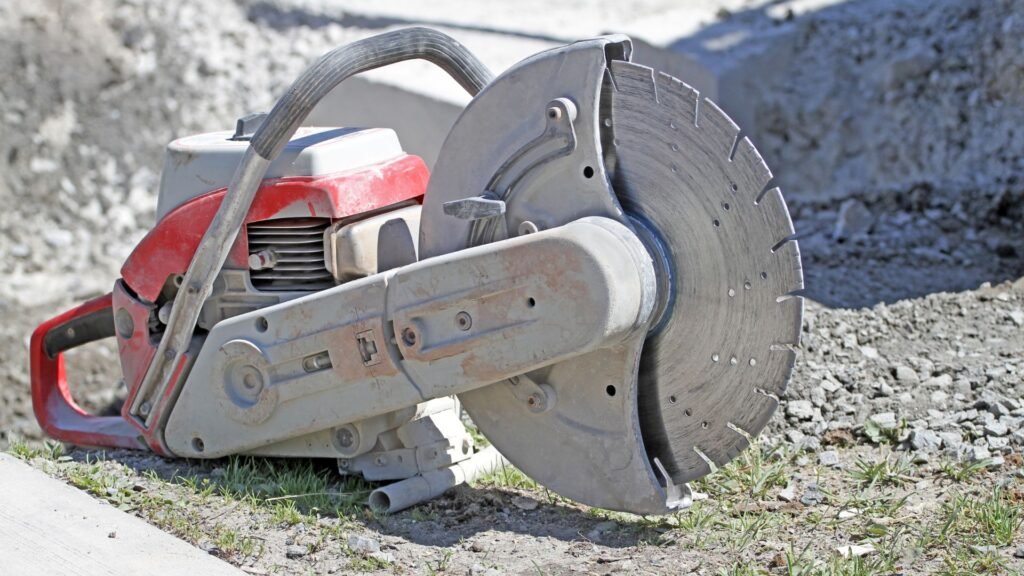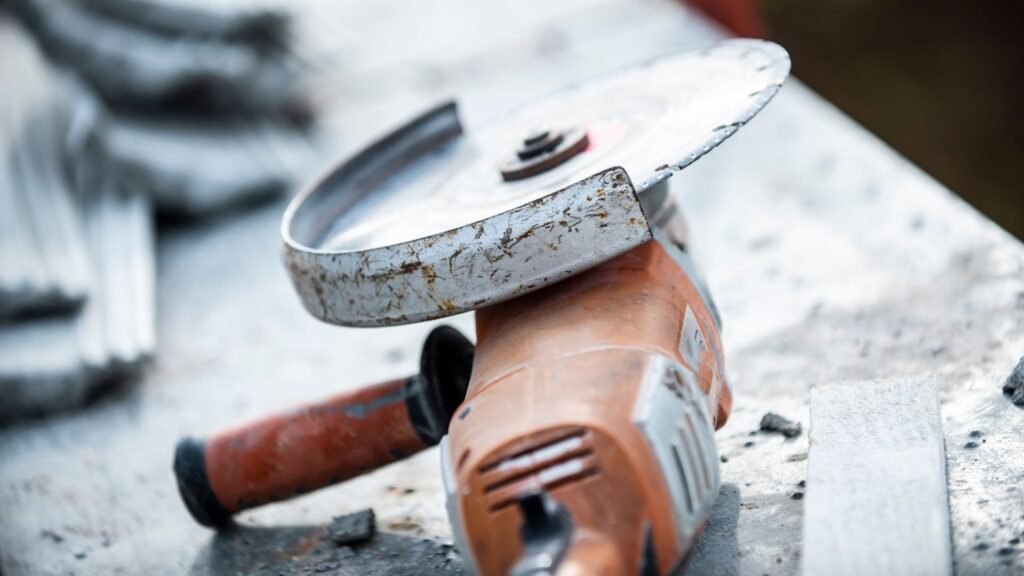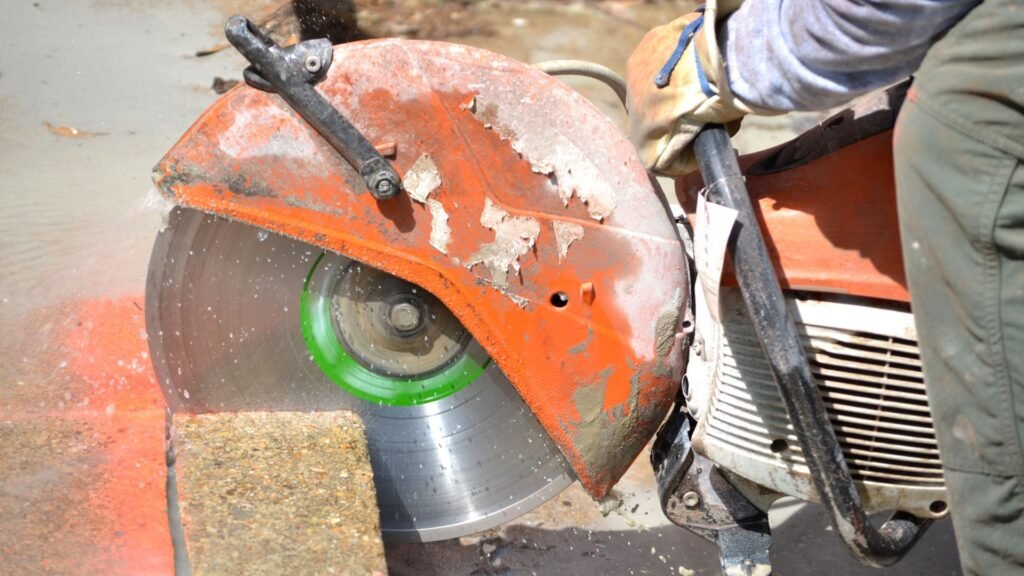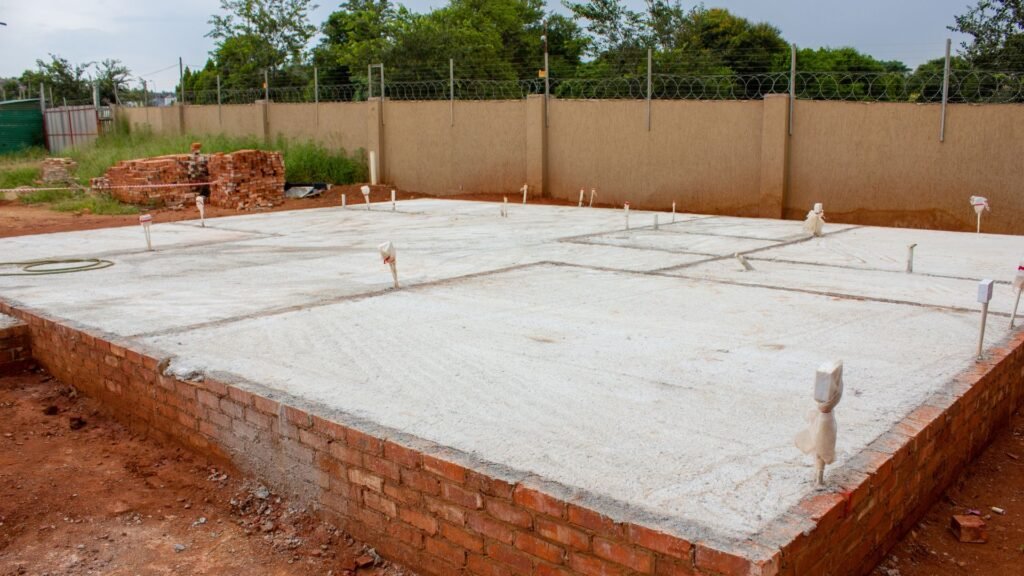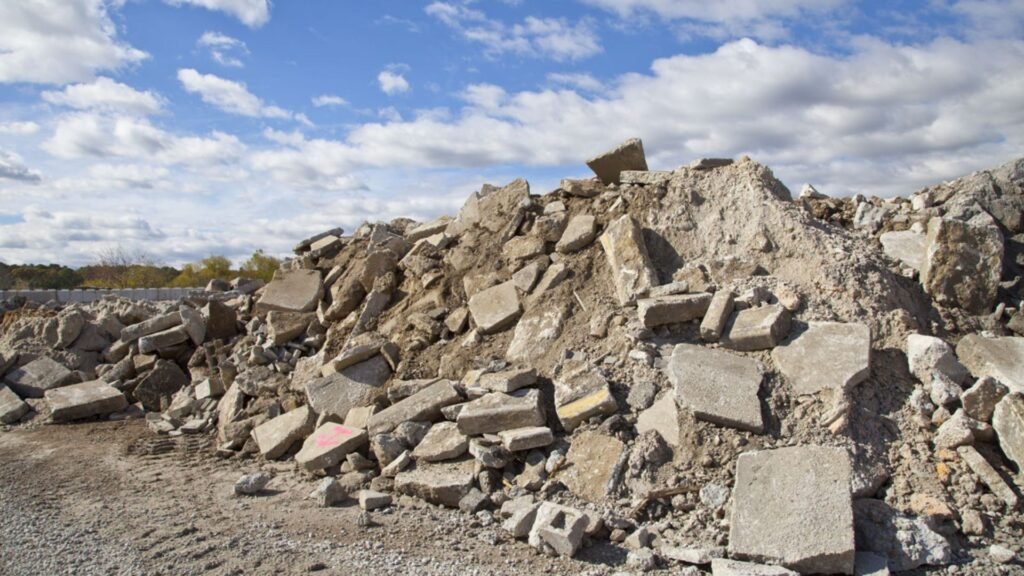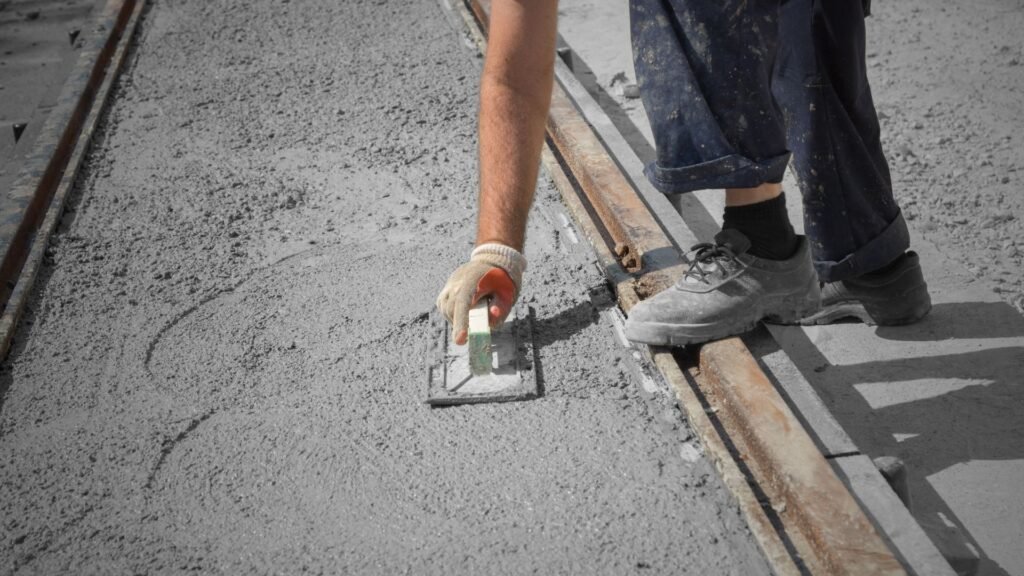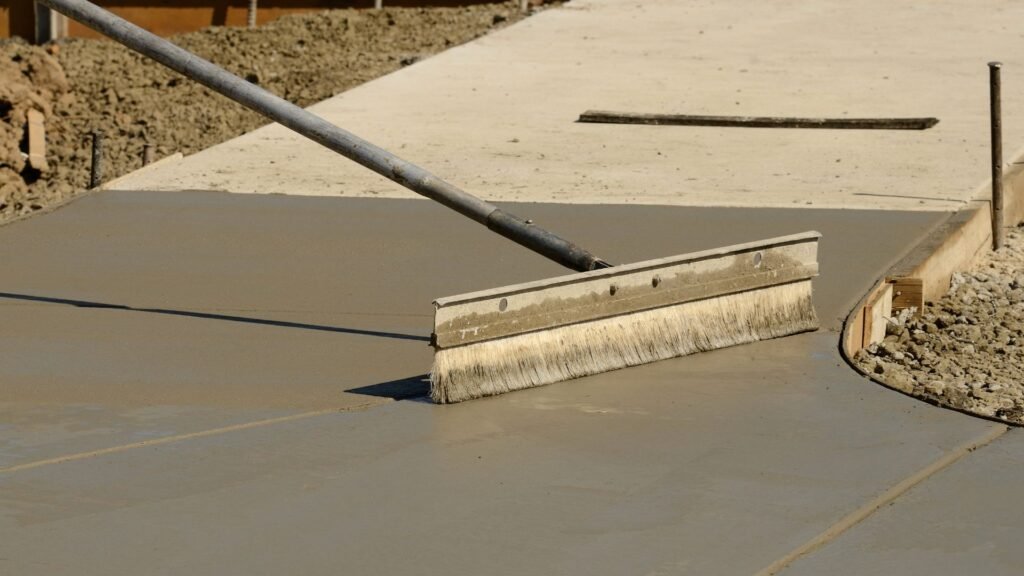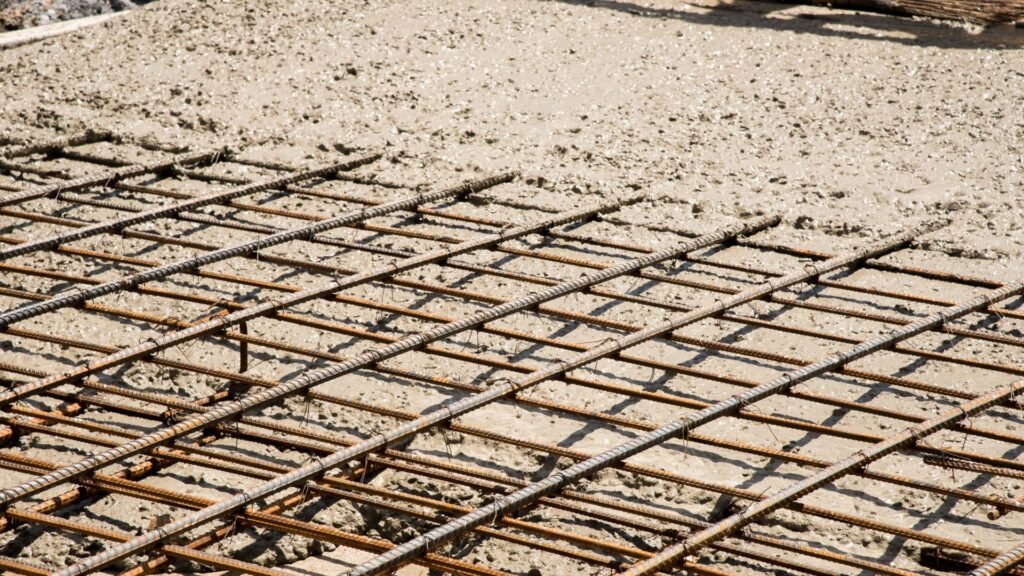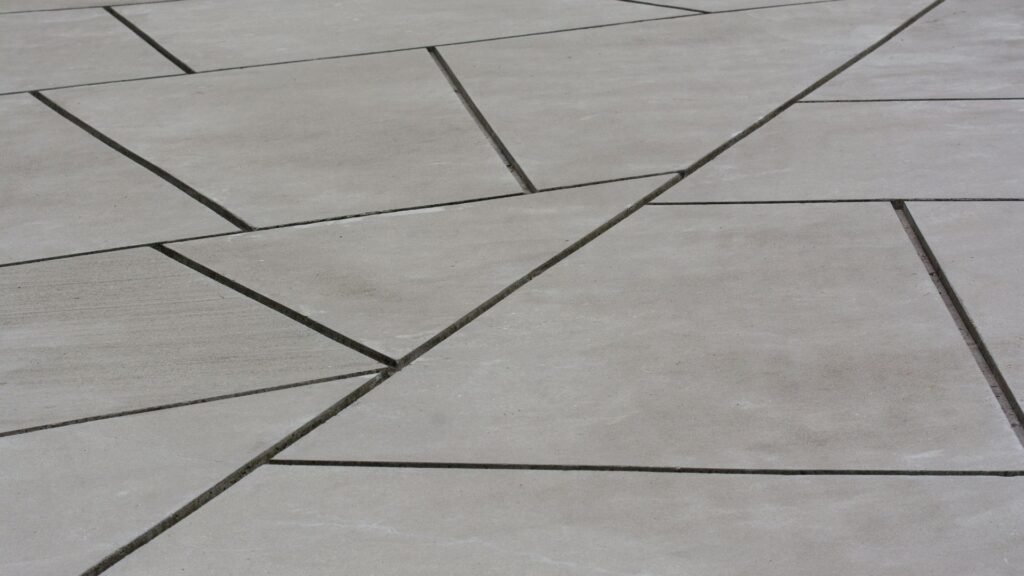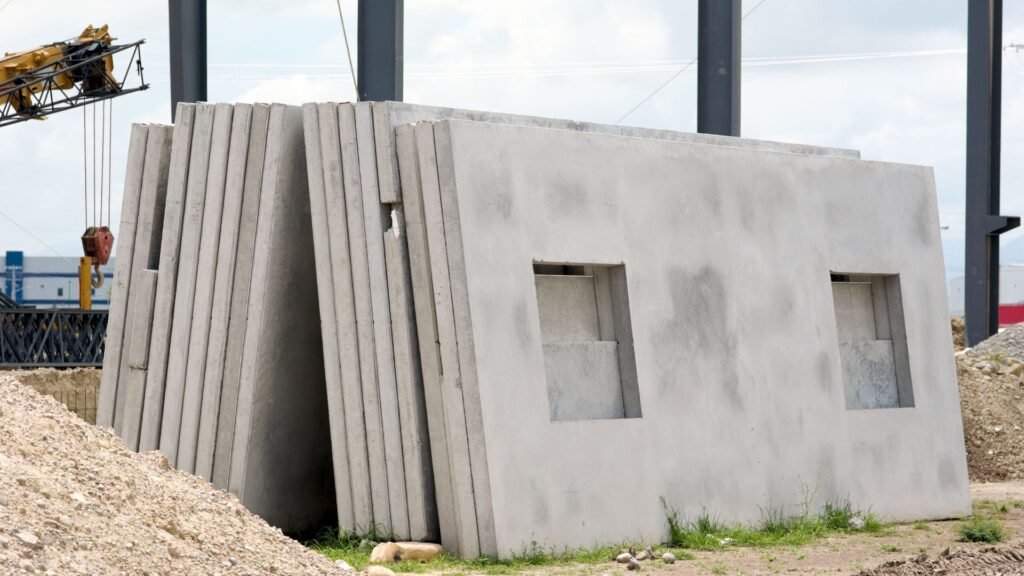Welcome to your go-to guide on concrete cutting techniques. Whether you’re planning a home renovation, installing new plumbing, or just curious about how professionals slice through thick concrete, this post breaks it all down in plain terms. Concrete cutting isn’t just about powering up a saw, it involves precision, safety, and knowing which method fits the job. From saw cutting to core drilling, each technique serves a different purpose depending on the size, depth, and complexity of the task. If you’ve ever wondered how these methods work or whether you can handle it yourself, you’re in the right place.
Concrete cutting techniques refer to the methods used to break, cut, or shape concrete surfaces for construction, renovation, or repair. Common techniques include saw cutting for straight lines, core drilling for precise holes, wall sawing for vertical cuts, and wire sawing for large or thick structures. Each method is chosen based on the type, thickness, and purpose of the concrete being cut.
Table of Contents
When Do You Need To Cut Concrete?
Concrete cutting might not be something you think about every day, but if you’re planning any home project that involves structural changes, it’s something you’ll likely encounter. Cutting concrete isn’t limited to large commercial jobs, it’s a common step in many residential and remodeling tasks. Understanding when and why you might need to cut concrete helps you plan better and avoid costly mistakes.
One of the most common reasons homeowners cut concrete is during renovations. Let’s say you’re opening up space by removing a section of wall or extending your driveway. These projects often require cutting through concrete slabs or blocks to make room for new layouts or installations. If your garage has a concrete floor and you’re replacing it or expanding the space, cutting and removing part of the slab is usually the first step.
Another situation that calls for concrete cutting is when you need to access plumbing, electrical, or HVAC systems. Many homes have concrete foundations or floors where these systems are embedded. If you’re updating wiring or adding new utility lines, cutting into the concrete becomes necessary to reach those areas. For example, installing a new bathroom in a basement might require cutting the floor to lay new pipes.
Concrete cutting also plays a role in demolition or remodeling. If you’re removing a concrete patio, wall section, or an outdated slab, precise cuts help you control the demolition area and reduce mess. This is especially useful in tight or finished spaces where you can’t afford accidental damage.
One often-overlooked reason for cutting concrete is to create control joints. These are planned cuts that help prevent cracking as the concrete expands and contracts over time. By cutting control joints at the right intervals, you guide the cracks to follow the joint lines instead of spreading randomly across the surface.
Think of simple, real-life examples like removing part of your garage floor slab to replace a cracked section, cutting a doorway through a concrete wall to connect rooms, or making space for a garden path or new air conditioning unit. In each case, knowing when and how to cut concrete makes the work cleaner, faster, and more efficient.
By recognizing these situations, you’ll be better prepared to handle or supervise your next project, whether you’re doing it yourself or hiring a pro.

Core Concrete Cutting Techniques Explained
Concrete cutting isn’t a one-size-fits-all job. Depending on the project’s size, depth, and goal, different methods are used to break through or shape concrete. Choosing the right technique ensures clean results, reduces risk, and saves time and money. Below are the five most common concrete cutting techniques, explained clearly so you can understand what each one is for and when to use it.
Saw Cutting
Saw cutting is the most widely used method for cutting concrete. It involves using circular blades, usually diamond-tipped, to slice through flat concrete surfaces. The blades are powered by either electric, gas, or hydraulic saws.
There are several types of saws:
- Handheld Saws: These are portable, good for smaller cuts, and often used in DIY projects or tight spaces.
- Walk-Behind Saws: Ideal for straight, long cuts in slabs such as sidewalks, driveways, or warehouse floors.
- Wall Saws: These are mounted on tracks and used to make vertical or sloped cuts in walls or other upright structures.
Best Use: Saw cutting is perfect for making straight, deep cuts in concrete slabs, walls, and floors. It’s commonly used in both residential and commercial jobs for tasks like cutting expansion joints or removing damaged sections.
Pros:
- Fast and precise
- Suitable for both shallow and deep cuts
- Easy to control for straight lines
Cons:
- Generates noise and dust
- Requires water supply for wet cutting or safety gear for dry cutting
Core Drilling
Core drilling is used to cut perfectly round holes in concrete. It’s ideal for creating openings for plumbing, electrical conduits, HVAC, or anchor bolts. A core drill uses a hollow, diamond-tipped bit that grinds through the concrete to remove a clean cylinder.
This method works well on horizontal and vertical surfaces, including floors, walls, and even ceilings. Core drilling is also commonly used in structural testing and for taking concrete samples.
Best Use: Whenever a hole needs to be made in concrete, especially a precise one, core drilling is the go-to method.
Pros:
- Accurate and clean holes
- Minimal noise and vibration
- Works on various surfaces
Cons:
- Slower than other methods
- Requires specialized equipment and skill
Wall Sawing
Wall sawing involves using a circular saw mounted on a track to cut precise openings in vertical concrete surfaces. It’s typically used in building renovations or structural changes, especially when adding doors, windows, or ventilation openings in reinforced concrete walls.
Wall saws can cut through very thick concrete and are capable of making angled cuts if needed.
Best Use: Making straight, vertical cuts in concrete walls, ideal for structural openings.
Pros:
- Perfect for vertical and angled cuts
- Accurate and clean results
- Can cut reinforced concrete
Cons:
- Requires professional setup and handling
- Less flexible for tight or irregular spaces
Wire Sawing
Wire sawing uses a steel wire embedded with diamond beads to cut through large or thick concrete structures. The wire is looped around the section to be cut and pulled continuously using a pulley system. This method is often used when traditional saws are not practical due to size, shape, or location.
It’s highly effective in industrial settings or when demolishing massive concrete structures like bridge sections or large pillars.
Best Use: Cutting large, complex, or thick structures that other saws can’t handle.
Pros:
- Can cut any size or shape
- Low vibration, great for sensitive structures
- Works in confined or underwater spaces
Cons:
- Slower than saw cutting
- Expensive and not ideal for small jobs
Hydraulic And Splitter Methods
Hydraulic splitters are used to break concrete apart using hydraulic pressure. These tools insert into pre-drilled holes and expand to force the concrete to crack. They’re often used when noise and vibration must be minimized, such as in indoor demolitions or near sensitive equipment.
Unlike other methods, this one doesn’t actually cut the concrete, it breaks it apart.
Best Use: Demolition jobs where precision isn’t critical but noise and dust must be minimized.
Pros:
- Quiet and dust-free
- No vibration, safe for fragile environments
- Cost-effective for breaking up large volumes of concrete
Cons:
- Not suitable for detailed or controlled cuts
- Requires pre-drilling and setup time
Each of these concrete cutting techniques has its place. The right one depends on the material thickness, cut location, and whether precision or speed matters more. For small home projects, saw cutting and core drilling often get the job done. For larger commercial work, wire sawing or hydraulic splitting might be needed. Understanding these methods can help you choose smarter and stay safe.
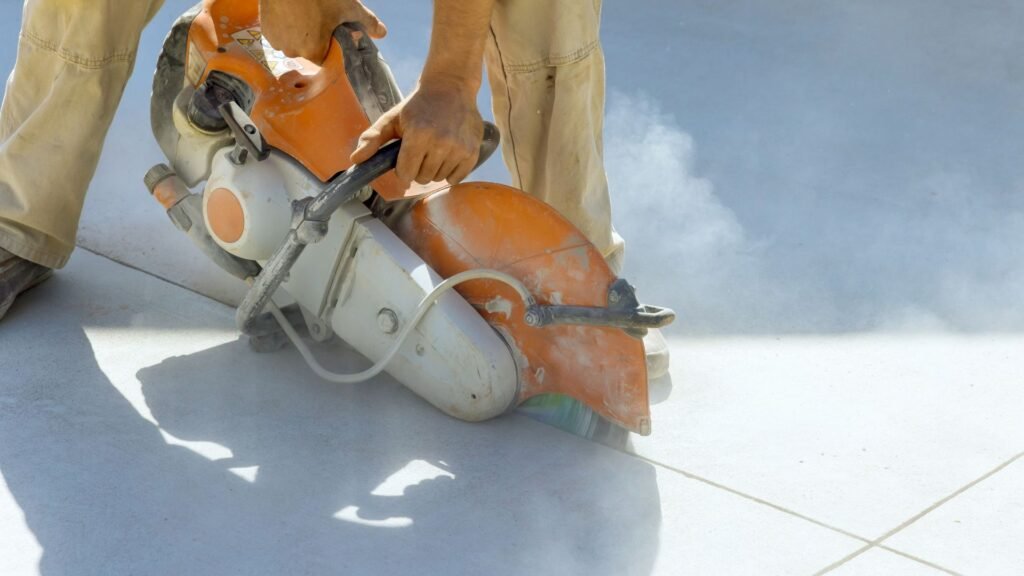
Tools And Equipment Used In Concrete Cutting
When it comes to cutting concrete safely and accurately, having the right tools and equipment makes a big difference. Whether you’re handling a small DIY job or preparing for a larger project, knowing what tools to use and how to use them can save you time, money, and stress. Below are the essentials every homeowner or contractor should understand before picking up a saw or calling in a pro.
Diamond Blades: Why They’re Preferred
Diamond blades are the top choice for cutting concrete, and for good reason. They’re built with industrial-grade diamonds embedded into the edge of the blade. This design allows them to grind through concrete, rebar, asphalt, brick, and other dense materials with precision. Unlike abrasive blades that wear down quickly, diamond blades last longer and cut cleaner. They’re especially useful for straight cuts in sidewalks, slabs, or foundations. You’ll find them used in most handheld saws, walk-behind saws, and wall-cutting tools. For best results, match the blade to the type of concrete you’re cutting, wet or dry, and always follow the manufacturer’s specs.
Wet Vs. Dry Cutting
Concrete can be cut using either wet or dry methods. Each has its purpose, and the right choice depends on your workspace, tools, and the type of cut needed.
- Wet cutting uses water to cool the blade and control dust. It’s the safer and cleaner method, especially indoors or in areas with poor ventilation. The water reduces friction, which helps extend the blade’s life and keeps the machine from overheating. It also prevents harmful concrete dust, like silica, from becoming airborne.
- Dry cutting is typically used outdoors or in well-ventilated areas. It doesn’t require a water source and works well for small, shallow cuts. However, it produces a lot more dust, which means you’ll need strong respiratory protection and must clean up thoroughly afterward.
Noise, Dust, And Vibration Control
Cutting concrete can be loud and messy. The noise from saws and grinders often exceeds safe hearing levels, especially with gas-powered tools. Always use ear protection. The dust released during dry cutting contains fine silica particles that can cause lung damage over time. A respirator rated for silica is a must when working without water.
Vibration is another factor to consider. Some tools can shake violently during use, especially if you’re cutting thick concrete or using a dull blade. These vibrations can lead to operator fatigue, reduced precision, and even long-term hand injuries if you’re not careful. Choose tools with anti-vibration features when possible, and take breaks during longer jobs.
Safety Gear: Gloves, Goggles, Respirator, Hearing Protection
Safety isn’t optional when cutting concrete. Before you even start, make sure you’re wearing the right gear:
- Heavy-duty gloves protect your hands from sharp debris and vibrating tools.
- Safety goggles or a face shield guard against flying dust and fragments.
- A respirator or dust mask is critical when dry cutting or working in enclosed spaces.
- Ear protection helps prevent hearing damage from loud machinery.
Some pros also wear steel-toed boots and thick clothing, especially on commercial job sites. It’s not about being overly cautious, it’s about staying safe from preventable injuries.
Tip: Call A Pro If The Job Is Large Or Unfamiliar
Concrete cutting looks simple, but it’s easy to get wrong. If your project involves thick concrete, load-bearing walls, or complex cuts near plumbing or wiring, it’s better to call a professional. Pros bring the right tools, safety gear, and experience to handle tough jobs without causing structural damage. They can also help you avoid costly mistakes, like cutting too deep or hitting utility lines.
Trying to save money by doing everything yourself might cost more in the long run. When in doubt, get expert help. You’ll protect your home and yourself from serious risks.
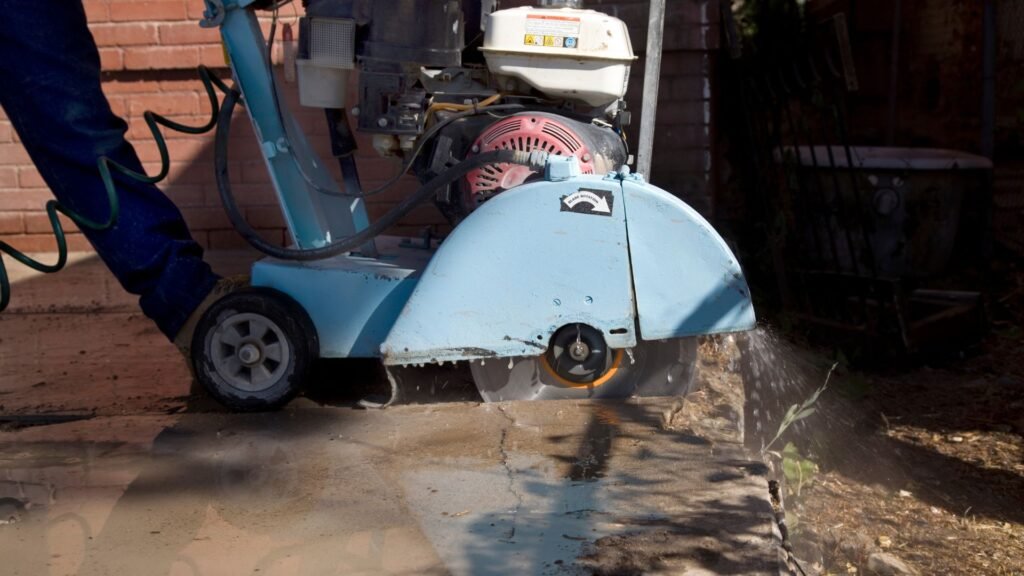
Key Safety Tips Everyone Should Know
Concrete cutting can look simple, but it comes with serious risks if not handled correctly. Whether you’re using a handheld saw for a driveway project or drilling into a garage wall, staying safe should be your top priority. Below are key safety tips that every homeowner or DIYer should keep in mind before starting.
Dangers Of Concrete Dust (Silica Exposure)
Concrete contains silica, a fine mineral that becomes airborne when concrete is cut or ground. Breathing in this dust may not seem harmful at first, but prolonged exposure can lead to silicosis, a chronic lung disease with no cure. Even a small project in a confined space can create dangerous air quality if you don’t control the dust.
Using water while cutting (wet cutting) is one of the most effective ways to keep dust down. You should also wear an N95 or higher-rated respirator, not just a basic dust mask. If you’re cutting indoors, ensure there’s proper ventilation or consider using dust collection attachments.
I once saw a neighbor cut through a concrete slab in his basement without any dust control. Within minutes, the air looked foggy, and he had to stop to catch his breath. That project ended with a hospital visit, not because of the saw, but because of the air he breathed.
Power Tool Safety And Protective Wear
Concrete cutting tools are loud, powerful, and unforgiving. A slip of the hand or a distraction can cause serious injury. Always inspect your tools before use. Check blades for cracks, tighten all bolts, and make sure the tool runs smoothly. Don’t forget that using the wrong blade can also lead to kickback or binding.
Wear the right gear every time:
- Safety glasses or goggles to protect from flying debris
- Hearing protection, especially with gas-powered saws
- Heavy-duty gloves for grip and hand safety
- Steel-toe boots to protect your feet if tools or debris fall
Never rush the job. Take breaks, especially if you’re working for long periods, and make sure you’re alert and focused.
Cutting Near Utilities Or Rebar
Before cutting, always check for embedded rebar, pipes, or electrical lines. Cutting into these can damage tools, cause fires, or even result in electrocution. For slabs or walls where you’re unsure what’s behind, use a concrete scanner or call a professional to mark the utilities.
If you hit rebar while cutting, stop immediately and switch to a rebar-compatible blade. For pipes or wires, call a pro, do not keep cutting.
When To DIY And When To Hire Out
Small surface-level jobs like trimming a patio edge or scoring a driveway can often be done safely with a rented saw. But if your project involves:
- Thick concrete slabs (6 inches or more)
- Vertical cutting (walls or columns)
- Tight indoor spaces
- Nearby plumbing or wiring
- Large-scale removal
Then it’s smarter to call in a professional. Cutting concrete in the wrong spot or at the wrong depth can lead to costly damage and even structural issues.
A homeowner I worked with tried to cut a drain trench into their garage floor but went too deep and hit the foundation’s rebar grid. The repair cost them double what a pro would’ve charged upfront.
Knowing your limits can save you money and keep you safe. When in doubt, ask or hire someone who knows the risks and how to manage them.
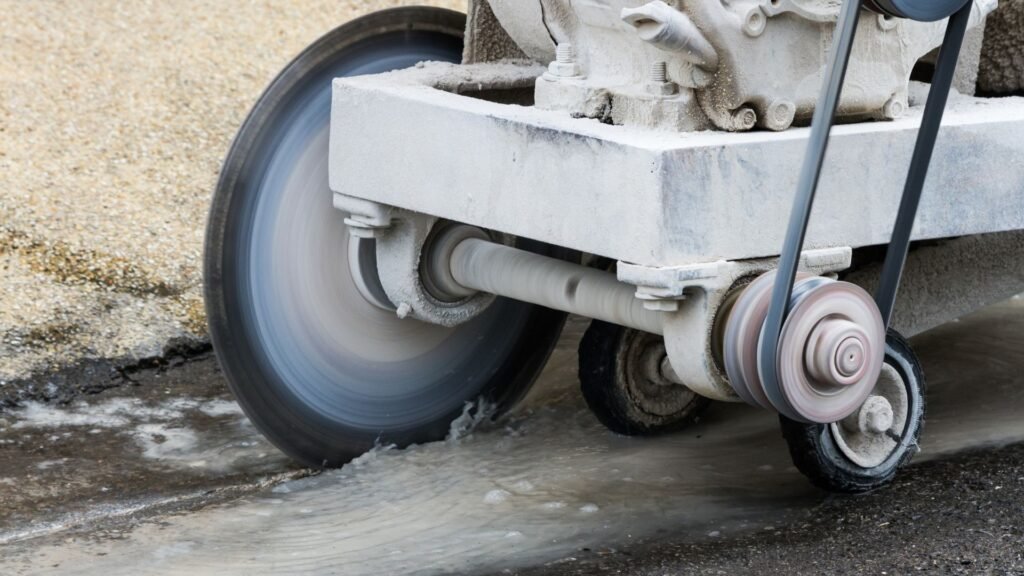
Mistakes To Avoid When Cutting Concrete
Concrete cutting may look simple, but it’s easy to make costly mistakes that can damage your tools, ruin the surface, or even cause injuries. Whether you’re a first-time DIYer or someone with experience, paying attention to the basics can save you from serious setbacks. Here are the most common mistakes you need to avoid when working with concrete.
- Cutting Too Deep Or Too Shallow
One of the biggest mistakes is not cutting at the right depth. If you cut too deep, you can hit embedded pipes, wiring, or rebar, leading to expensive repairs. On the other hand, shallow cuts may not be effective and can result in cracks spreading over time. To avoid this, always check the concrete thickness and adjust your blade depth accordingly. Use the right saw and blade for the job, and if you’re unsure, make a test cut on a small section before committing to a full pass. - Not Measuring Or Marking Properly
Poor planning leads to poor results. Skipping measurements or failing to mark your cut lines can throw your entire project off. A crooked cut isn’t just an eyesore, it can also weaken the concrete’s integrity. Before you power up your saw, use a chalk line or straight edge to mark your cutting path clearly. Double-check your layout, measure twice, and cut once. It may sound basic, but this step is key to a clean and accurate finish. - Ignoring Water Usage During Wet Cuts
Wet cutting helps reduce dust, keeps the blade cool, and extends its lifespan. Ignoring this step can cause the blade to overheat, dull faster, or break mid-cut. Dry cutting also produces concrete dust, which contains silica and can be dangerous when inhaled. If you’re using a wet saw, make sure the water supply is consistent and flows directly to the cutting area. If water isn’t available, wear a proper respirator and cut in a well-ventilated outdoor space. - Rushing The Job Or Skipping PPE
Concrete cutting is not a race. Moving too fast or ignoring basic safety steps increases your chances of making mistakes or getting hurt. Always wear protective gear, which includes gloves, eye protection, hearing protection, steel-toe boots, and a dust mask or respirator. Skipping PPE puts you at risk of flying debris, sharp blade contact, or long-term exposure to harmful dust. Take your time, stay alert, and treat every cut like it matters, because it does.
By avoiding these mistakes, you improve both the quality of your work and your safety. Whether you’re cutting a driveway slab or creating an opening in a wall, taking a few extra minutes to plan, measure, and protect yourself makes all the difference.
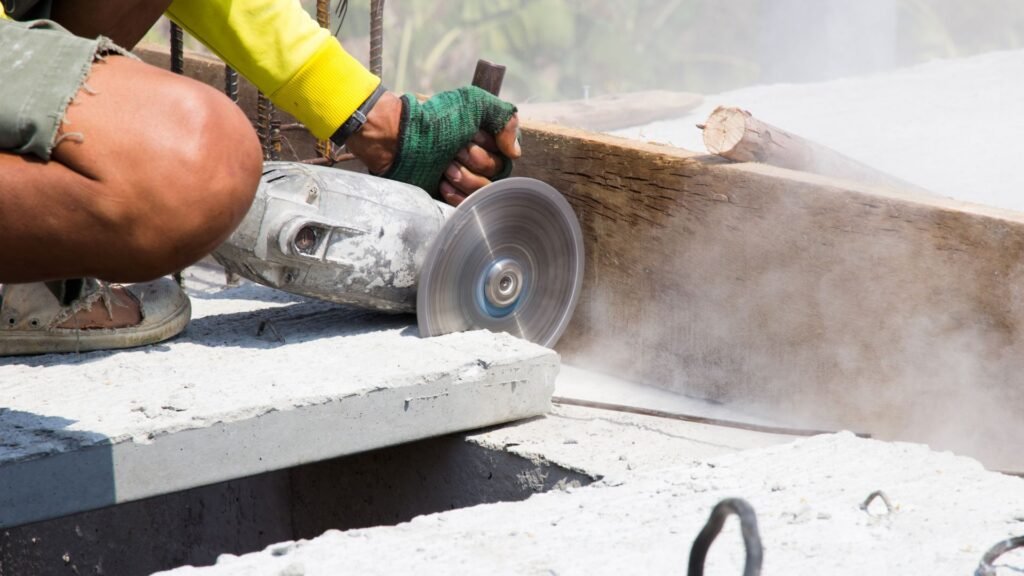
Should You DIY Or Hire A Pro?
Thinking about cutting concrete yourself? It’s a fair question. Not every concrete job requires a team of professionals, but not every project is safe or simple enough to tackle on your own either. The key is knowing where that line is, and what could go wrong if you cross it unprepared.
If you’re dealing with small surface cuts like trimming a patio edge, removing a damaged section of sidewalk, or slicing control joints into a new slab, then doing it yourself may be doable. With the right tools, a circular saw with a diamond blade, a chalk line, a water source for wet cutting, and the proper safety gear, you can handle these tasks with some preparation and caution.
But for larger, structural, or indoor jobs, hiring a professional is the smarter move. Cutting into a thick slab, removing part of a foundation wall, or drilling into reinforced concrete near plumbing or wiring requires experience and precision. Pros use advanced tools like wall saws, core drills, or wire saws, and they know how to avoid mistakes that can lead to costly repairs or serious safety hazards.
For a DIY job, renting a concrete saw can range from $50 to $150 per day, depending on the equipment and your location. You’ll also need to factor in safety gear, which could add another $40 to $100. On the other hand, hiring a professional concrete cutter typically costs between $5 to $20 per linear foot, depending on the thickness, location, and complexity of the cut. Core drilling services can range from $30 to $150 per hole based on diameter and depth.
So what’s the bottom line? If your project is small, outdoors, and easy to access, you may be able to save money by doing it yourself. But if there’s any doubt, like the presence of rebar, underground utilities, or structural implications, it’s better to call someone who does this every day. A bad cut in concrete isn’t easy to fix. And when it comes to your home or safety, it’s just not worth the risk.
Need help with your next concrete cutting project? Skip the guesswork and get the job done right. Visit Concrete Cutter Auckland to see how we can help you cut concrete safely, cleanly, and on time.
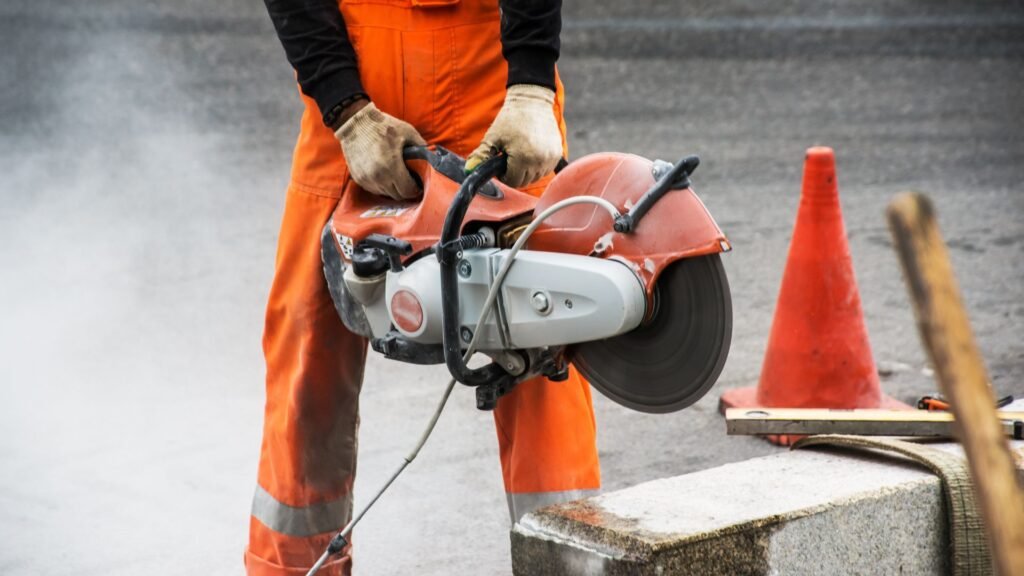
FAQs: About Concrete Cutting Techniques In NZ
What is concrete cutting?
Concrete cutting is the process of using tools and machines to cut, shape, or remove concrete. It’s commonly done in construction, renovations, or utility installations.
Why do I need to cut concrete?
You may need to cut concrete to create openings for doors or windows, access pipes or wiring, remove damaged slabs, or control cracking with joints.
What are the most common concrete cutting techniques?
The main techniques include saw cutting, core drilling, wall sawing, wire sawing, and hydraulic splitting. Each is used based on the project’s size and purpose.
What’s the difference between wet and dry cutting?
Wet cutting uses water to cool the blade and reduce dust, making it safer and cleaner. Dry cutting doesn’t use water and may be more convenient for small outdoor jobs.
Is it safe to cut concrete on my own?
Small DIY jobs can be safe with the right tools and protective gear. But cutting deeper or structural concrete should be handled by professionals to avoid damage or injury.
What tools do I need for concrete cutting?
Basic tools include a circular saw with a diamond blade, safety gear (gloves, goggles, respirator), chalk for marking, and water for cooling during wet cuts.
How deep can a concrete saw cut?
Cutting depth depends on the blade and saw type. Handheld saws typically cut up to 4–5 inches, while walk-behind saws can go deeper for thicker slabs.
What is core drilling in concrete cutting?
Core drilling is a method used to cut precise, round holes in concrete for plumbing, wiring, or HVAC systems. It’s commonly used in walls, floors, and ceilings.
How much does concrete cutting cost?
Costs vary based on the size, thickness, and technique. DIY tool rentals may cost $50–$150 per day, while professional services can range from $5 to $20 per linear foot.
When should I hire a professional instead of doing it myself?
Hire a pro if the job involves thick concrete, structural walls, indoor spaces with limited ventilation, or utility lines. Safety and accuracy matter more than saving time.
Conclusion
Concrete cutting may seem straightforward, but as you’ve seen, it involves more than just slicing through a slab. Understanding the different techniques—like saw cutting, core drilling, and wire sawing—helps you choose the right method for your specific needs. Whether you’re opening up space for plumbing, removing a damaged patio, or making room for a new doorway, it’s essential to approach the task with safety, planning, and the right tools. If you’re confident and the job is small, a DIY route might work, but for deeper or structural cuts, calling in a professional is the safer choice. Always wear proper safety gear, know what’s beneath the surface, and don’t skip the prep work. For more guidance on related tasks, check out our posts on concrete polishing, recommended cutting tools, and home project planning to ensure you’re fully prepared from start to finish.




